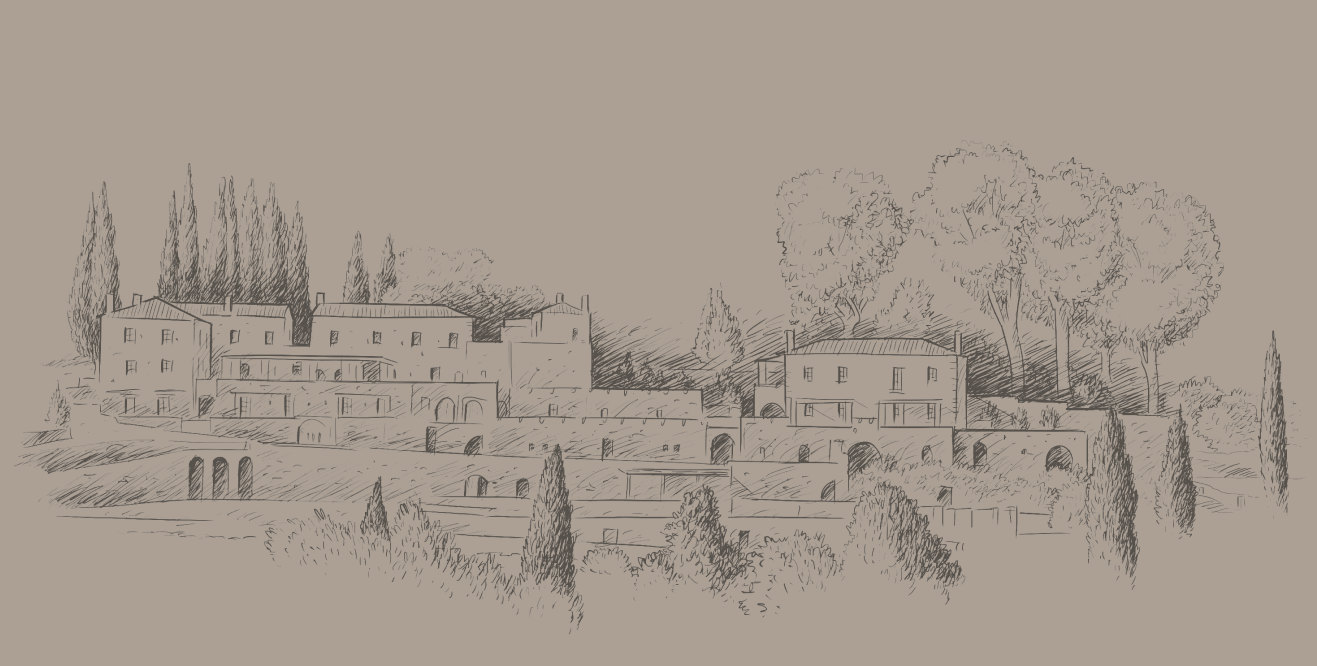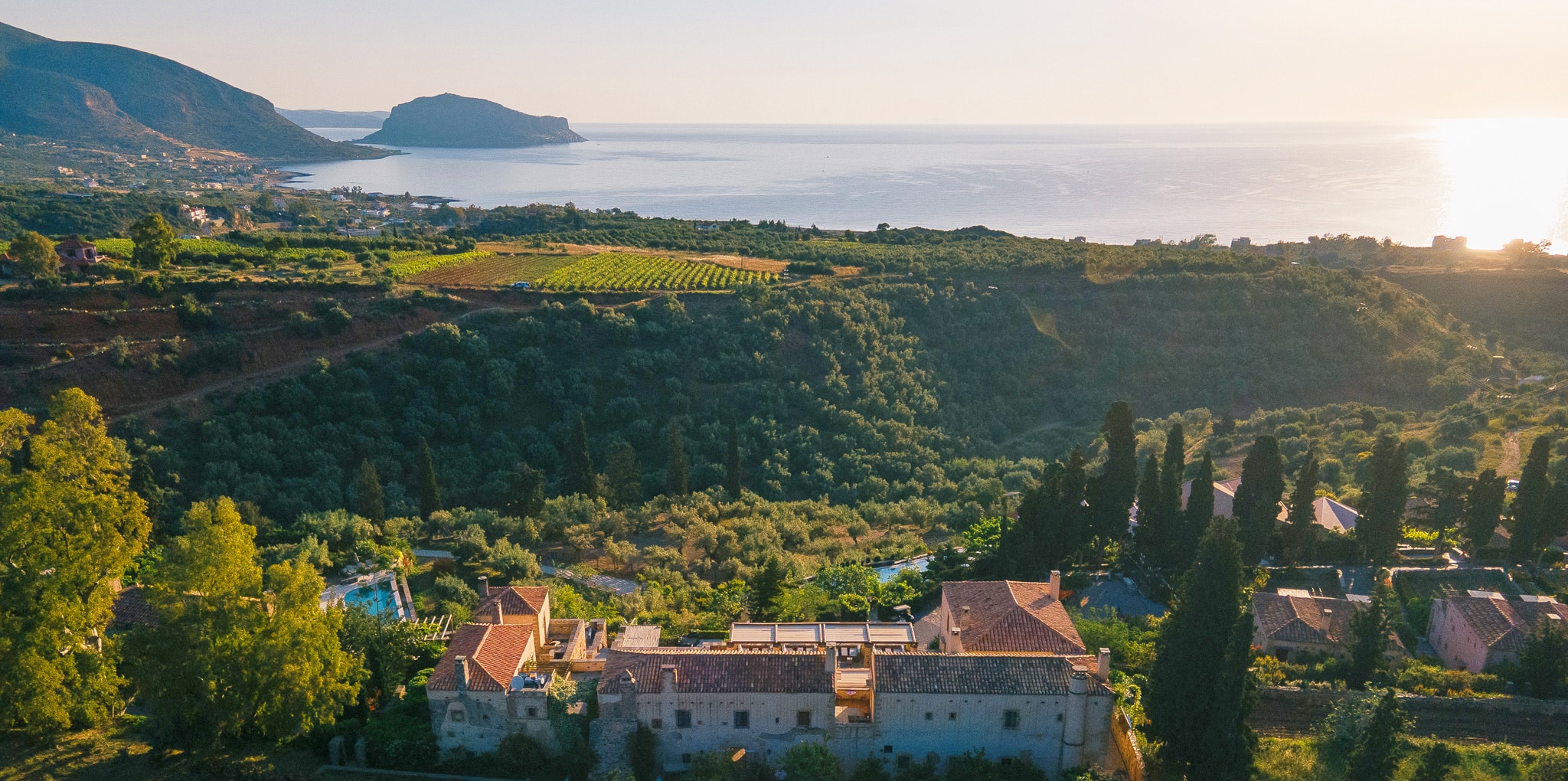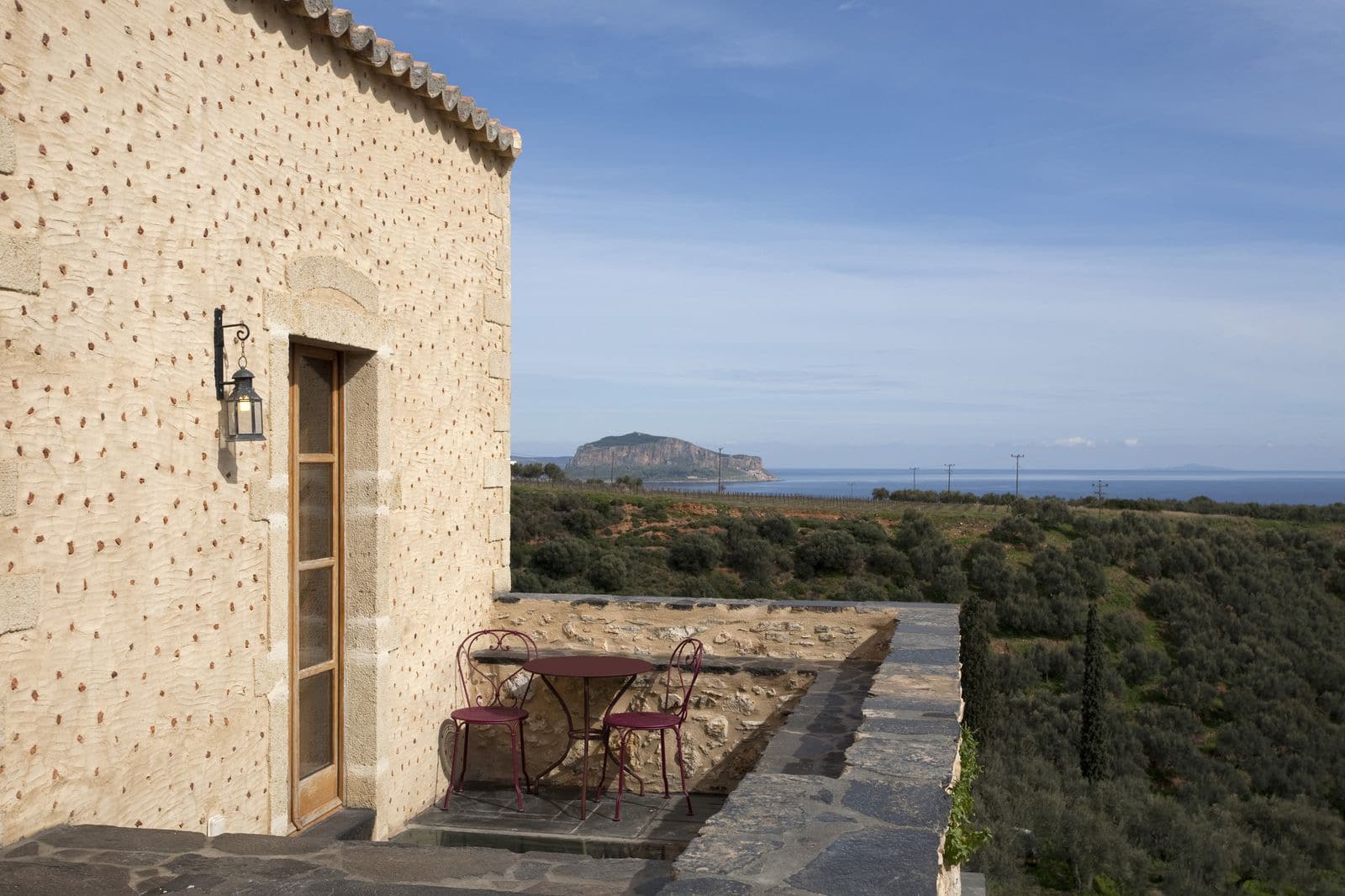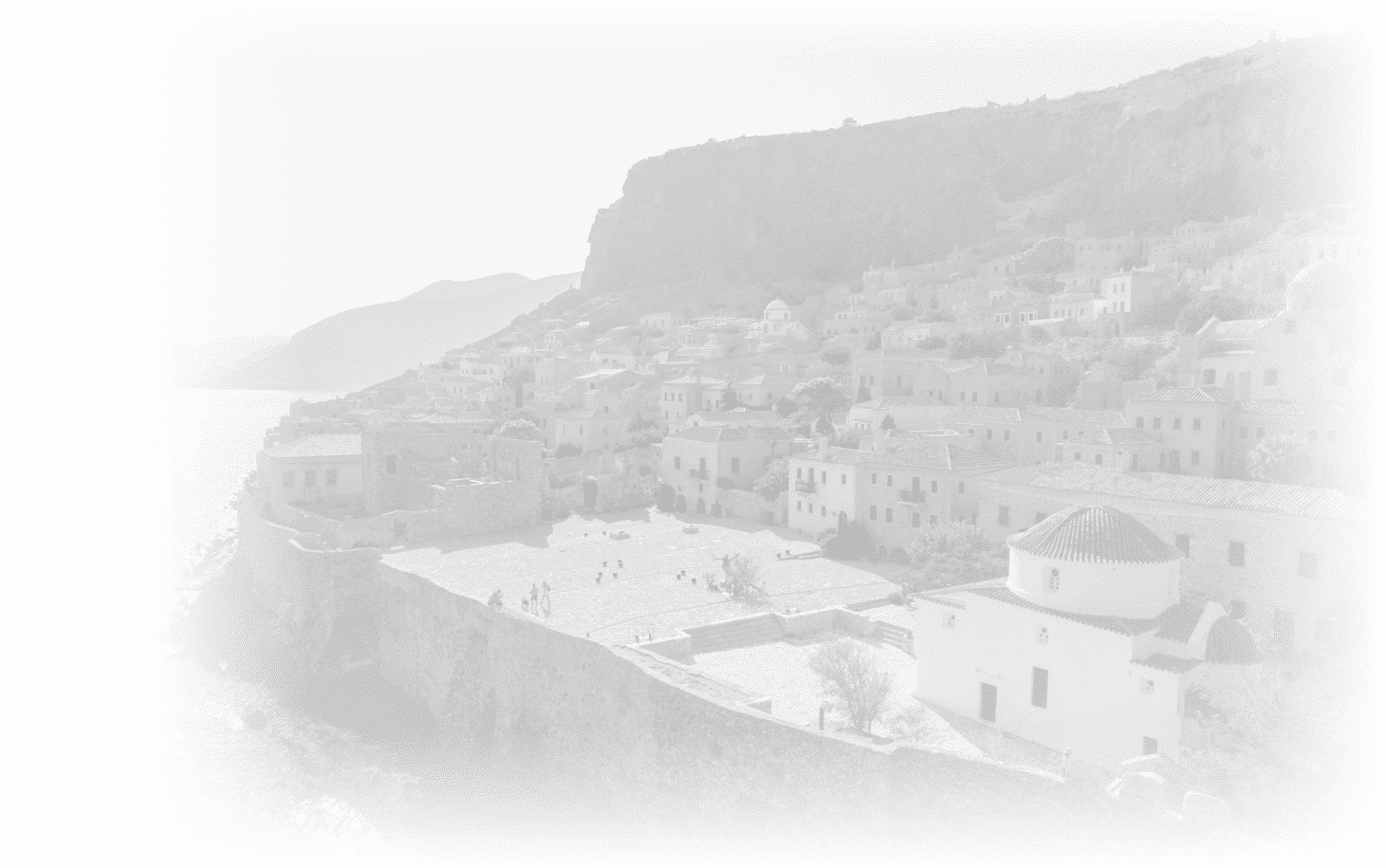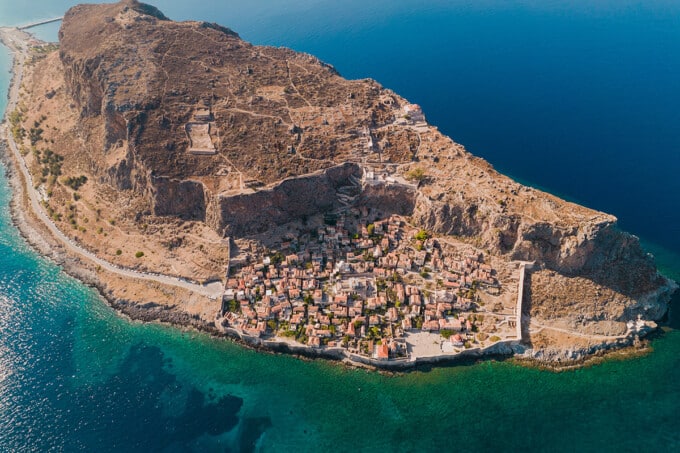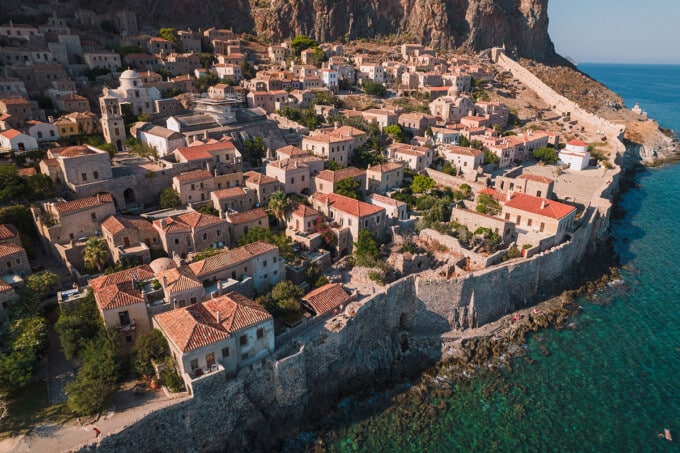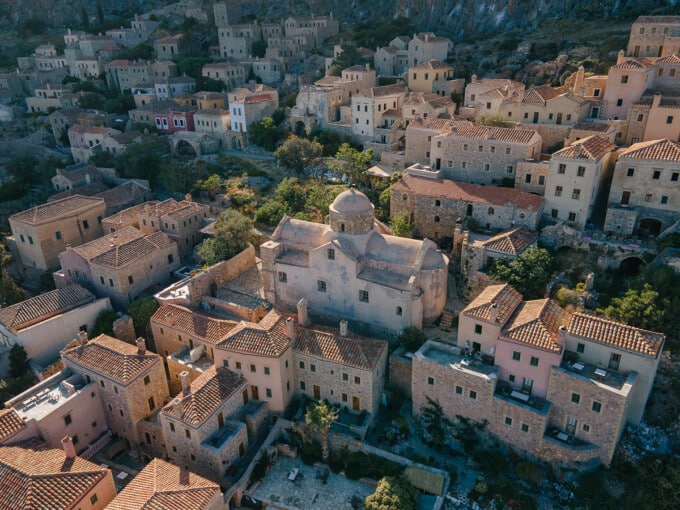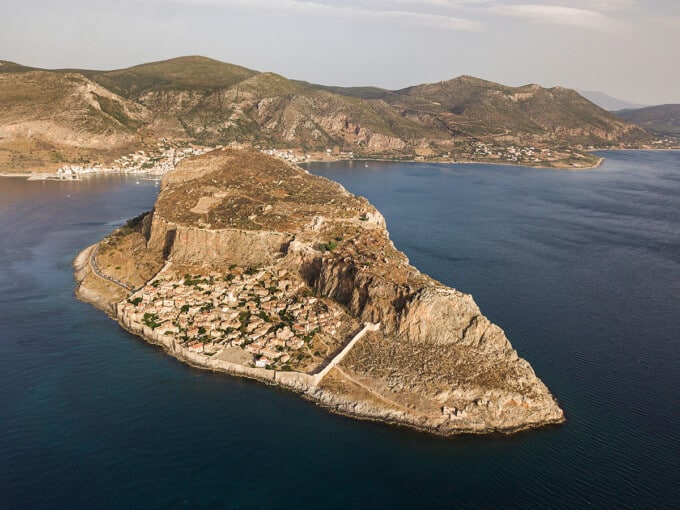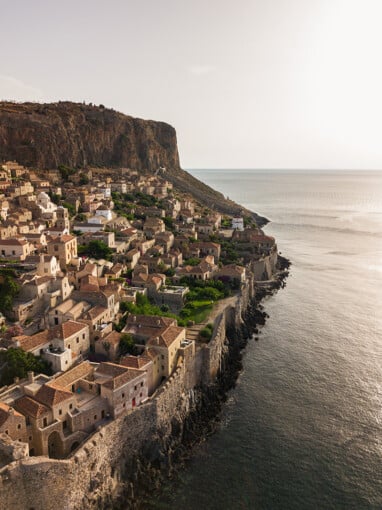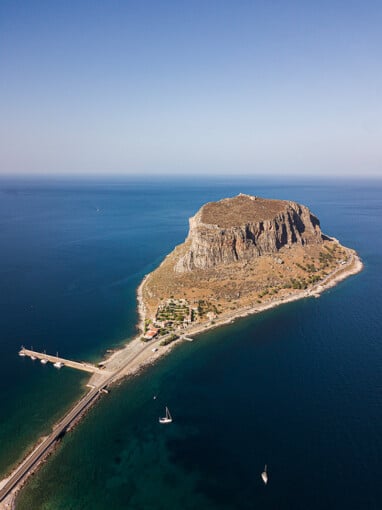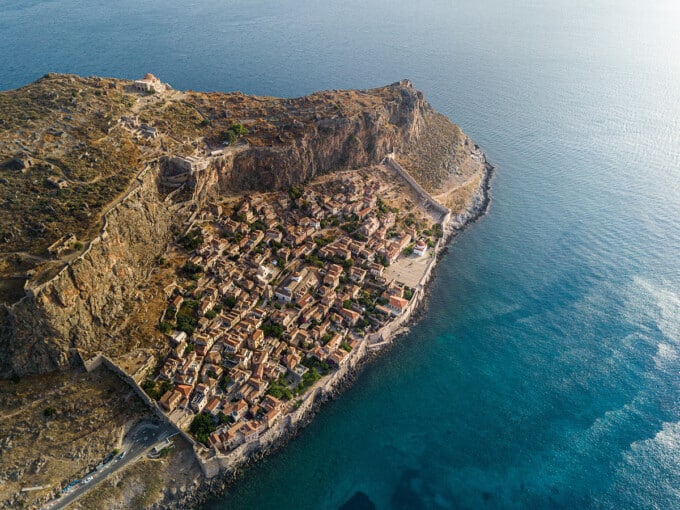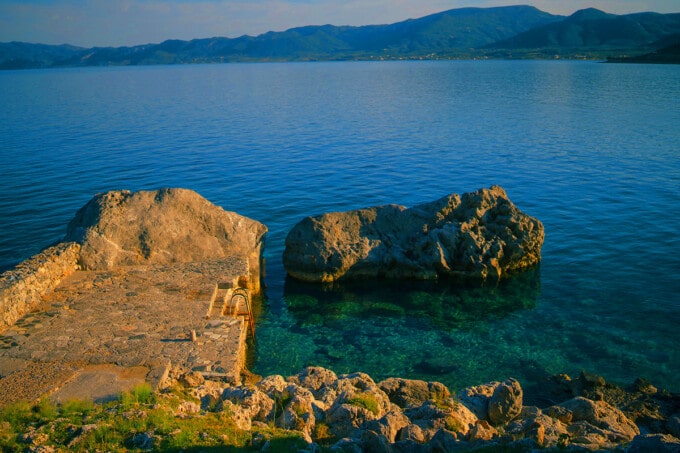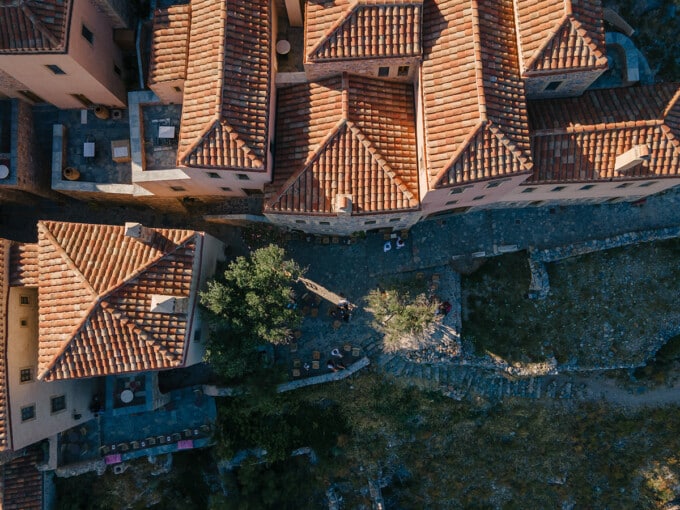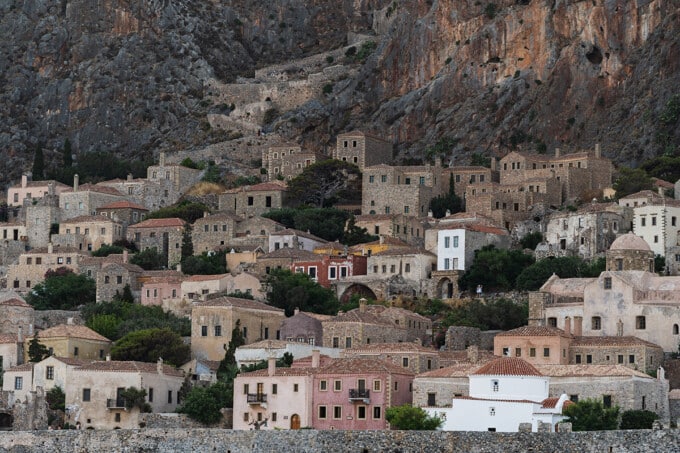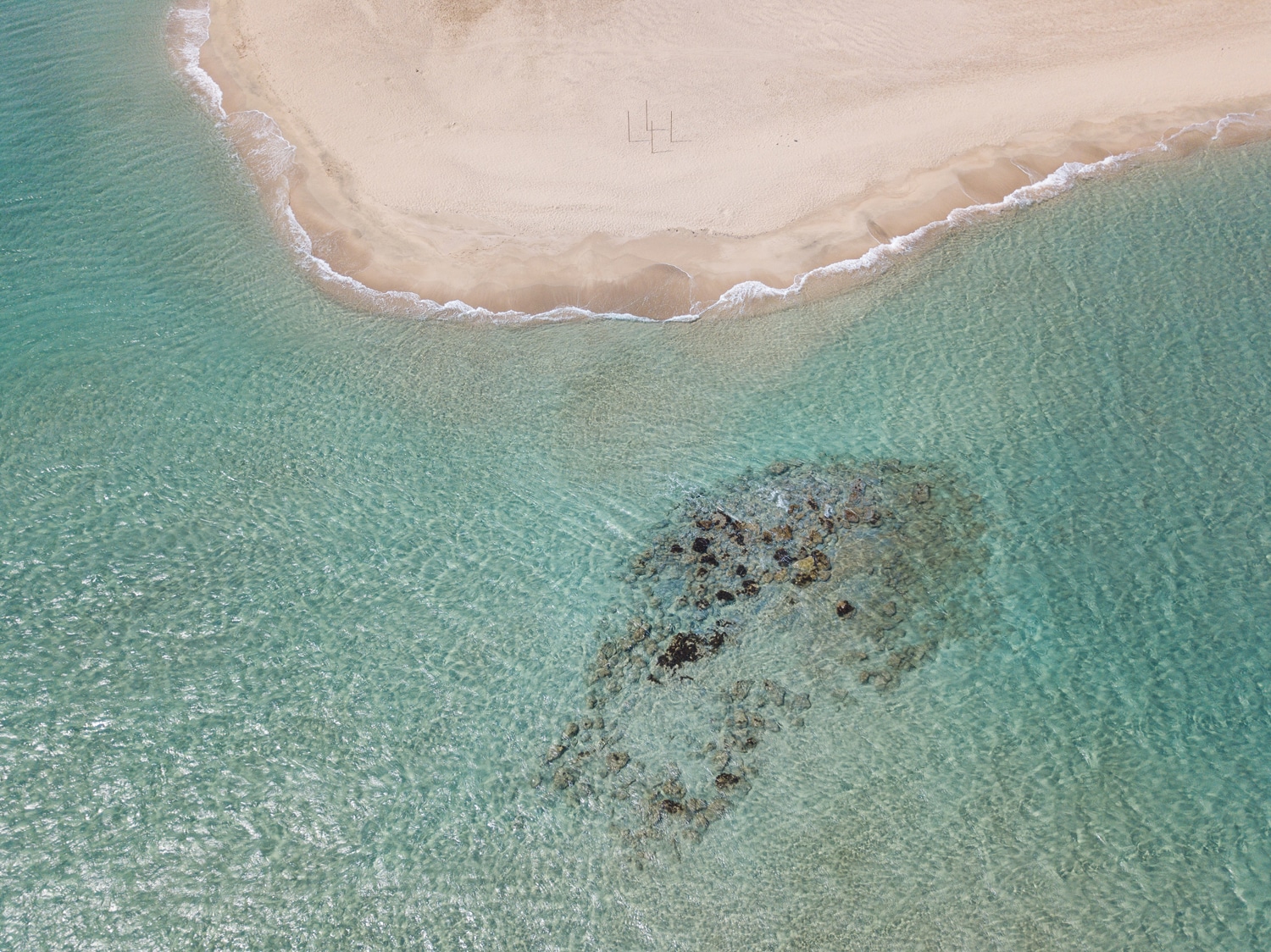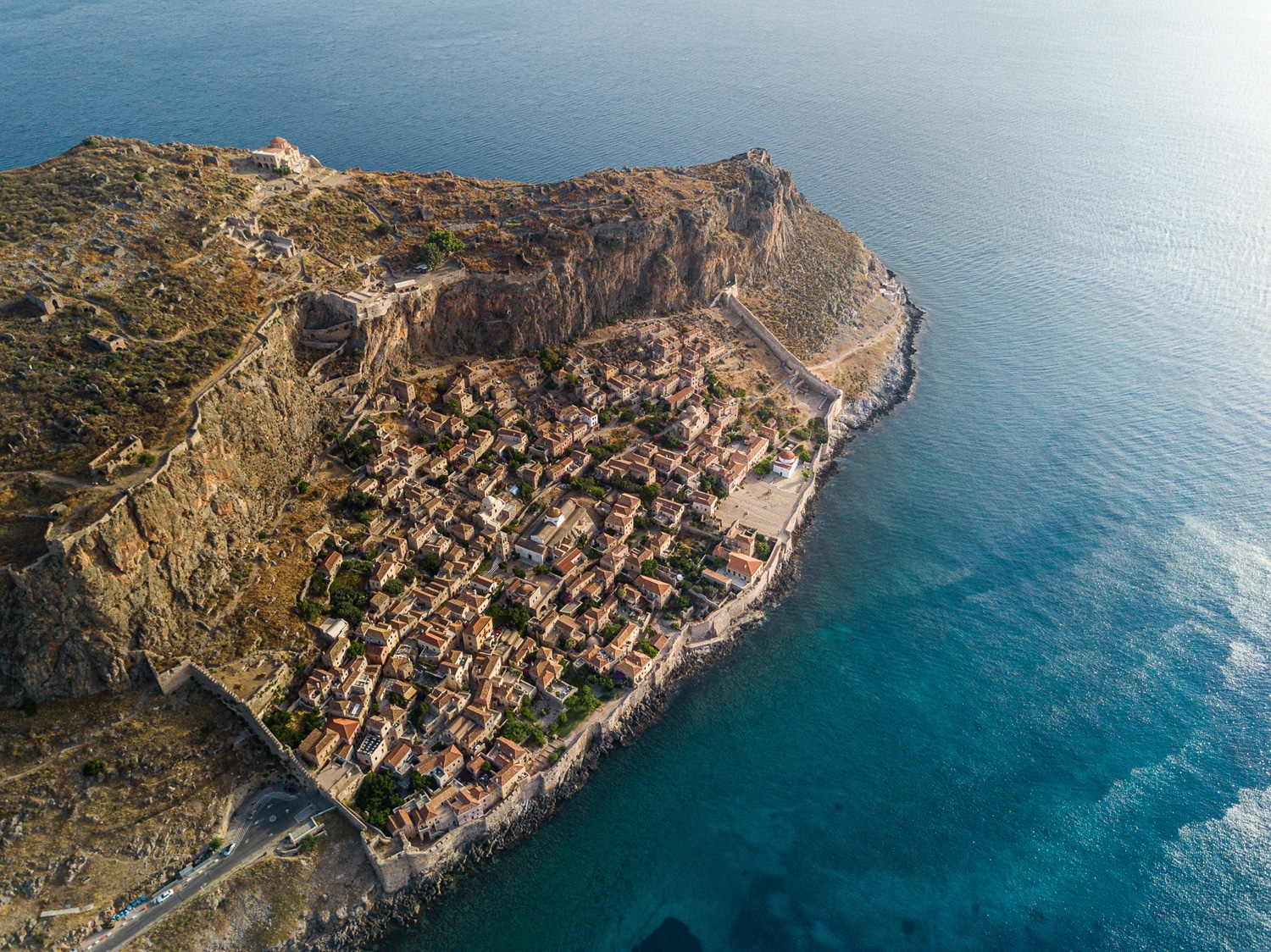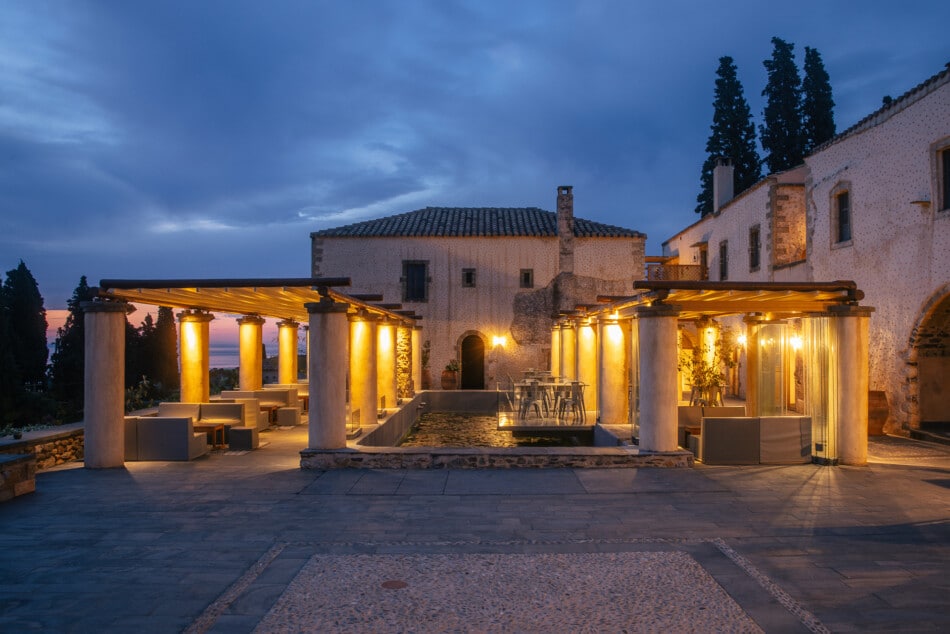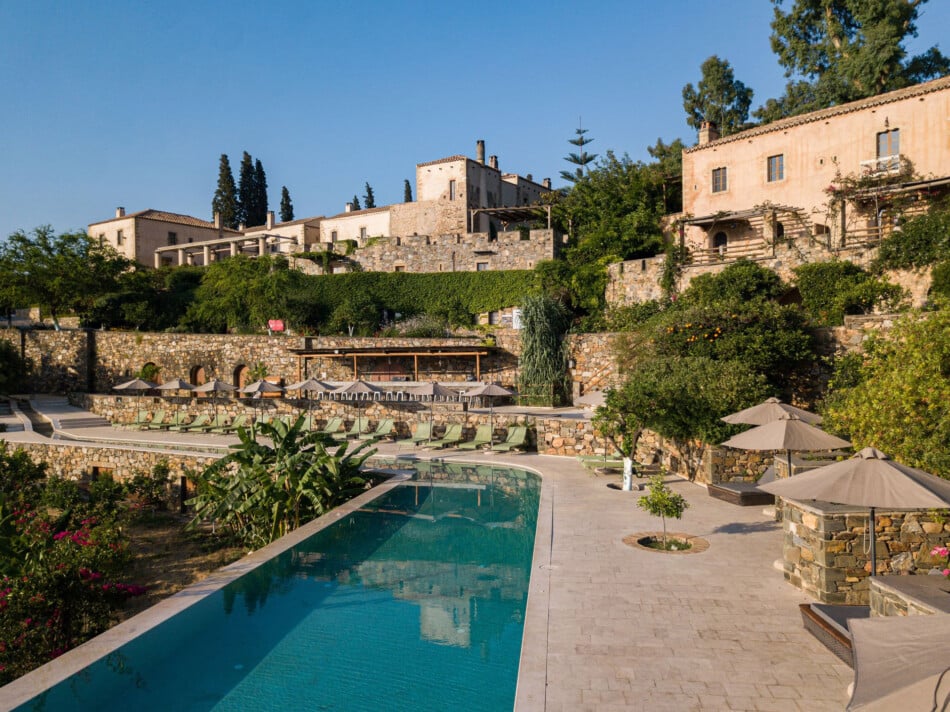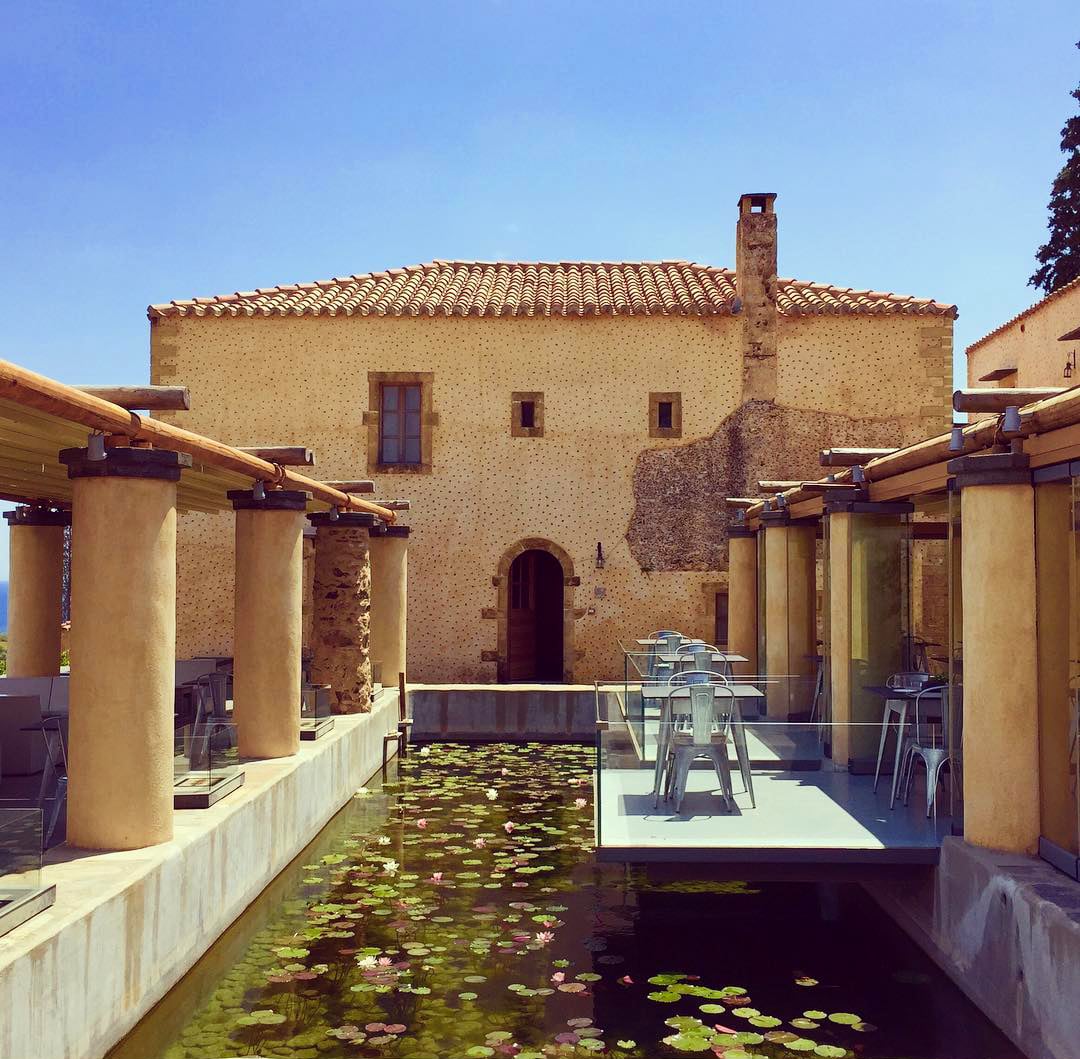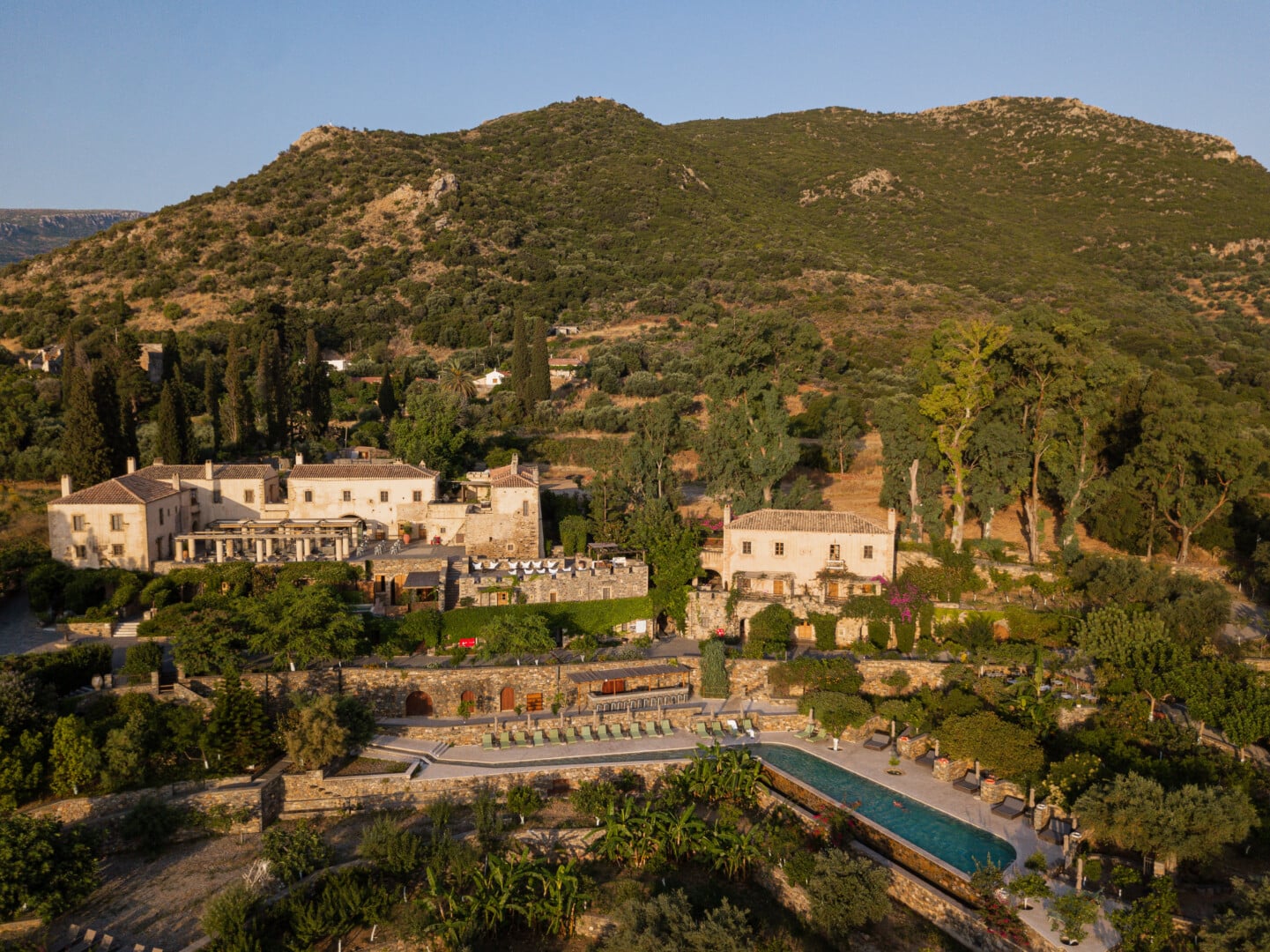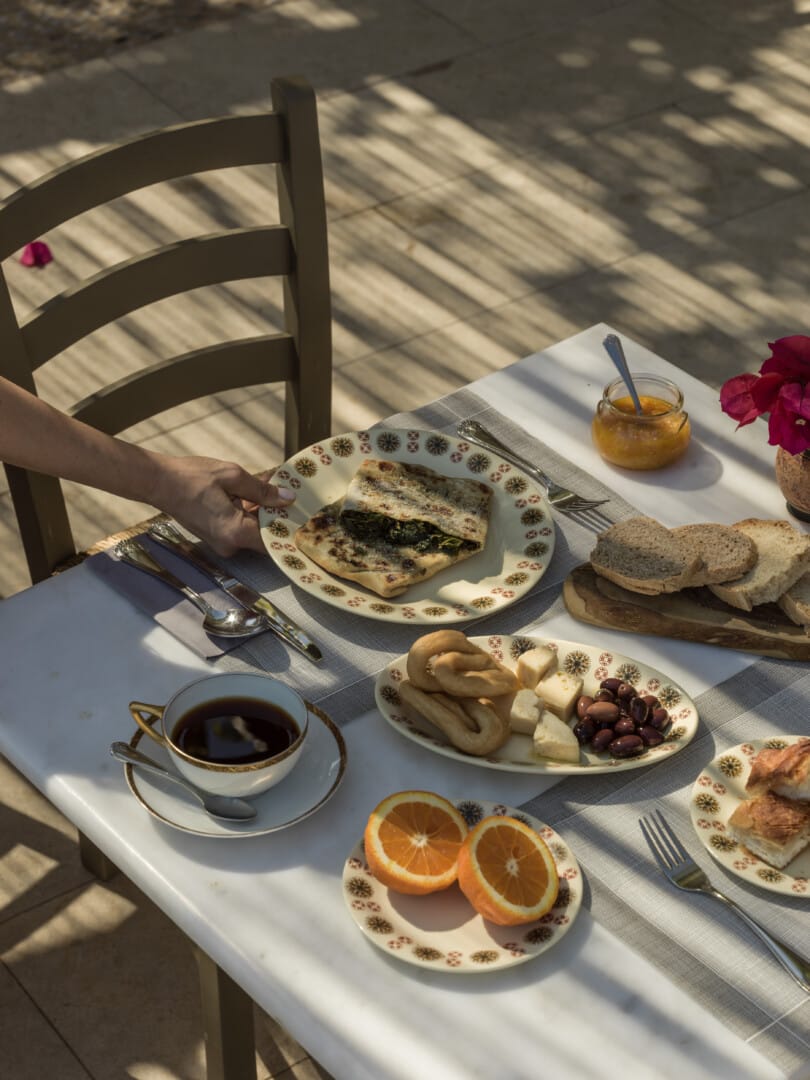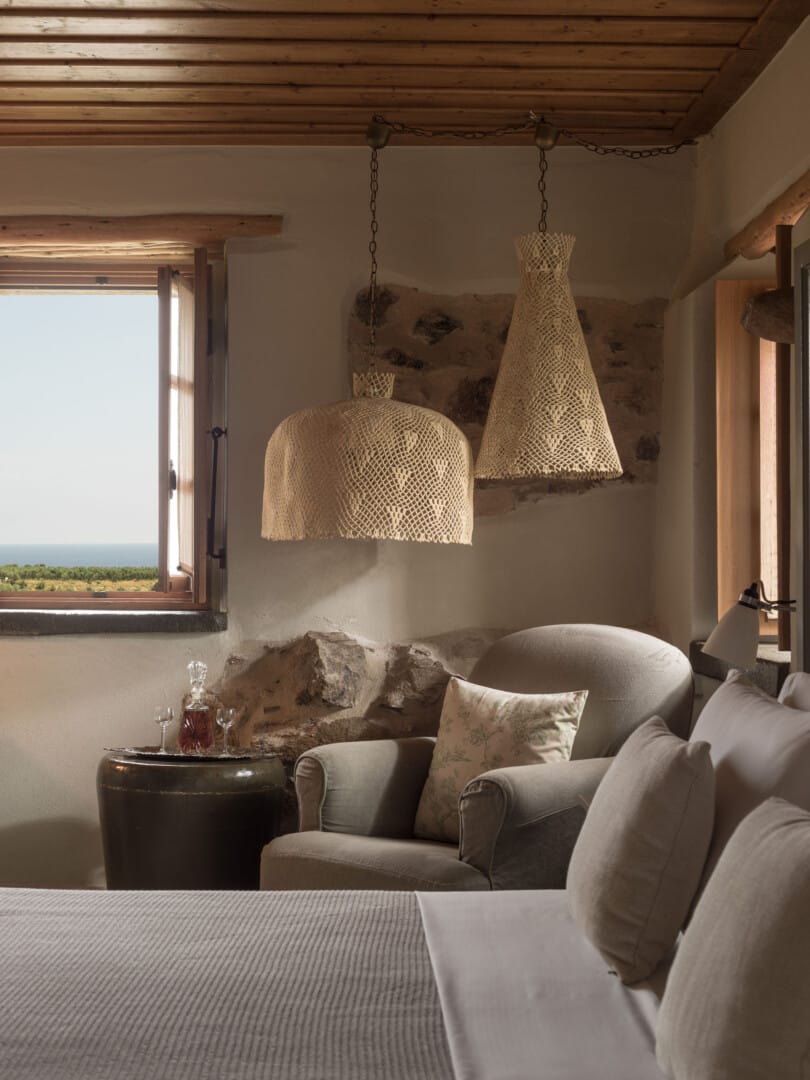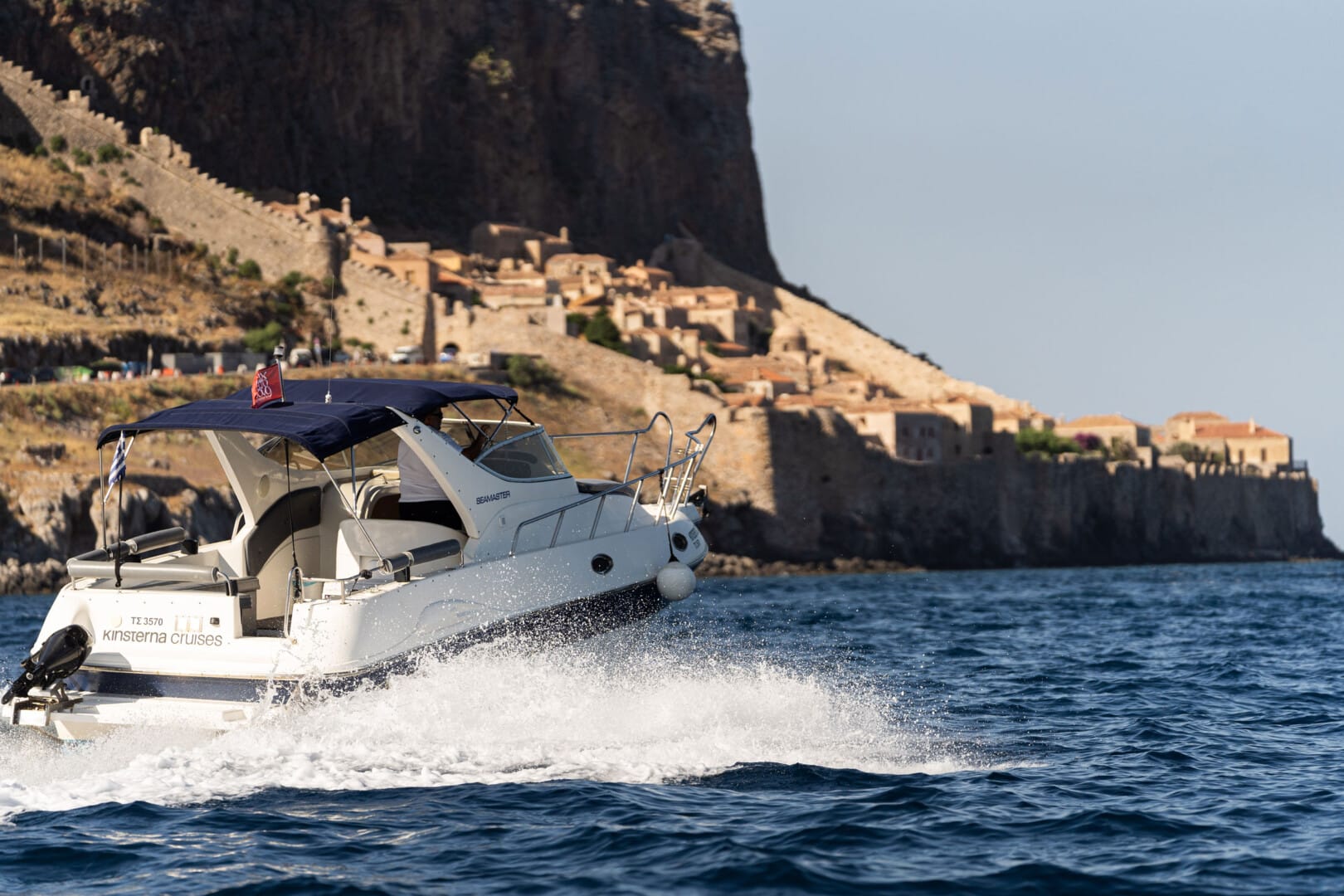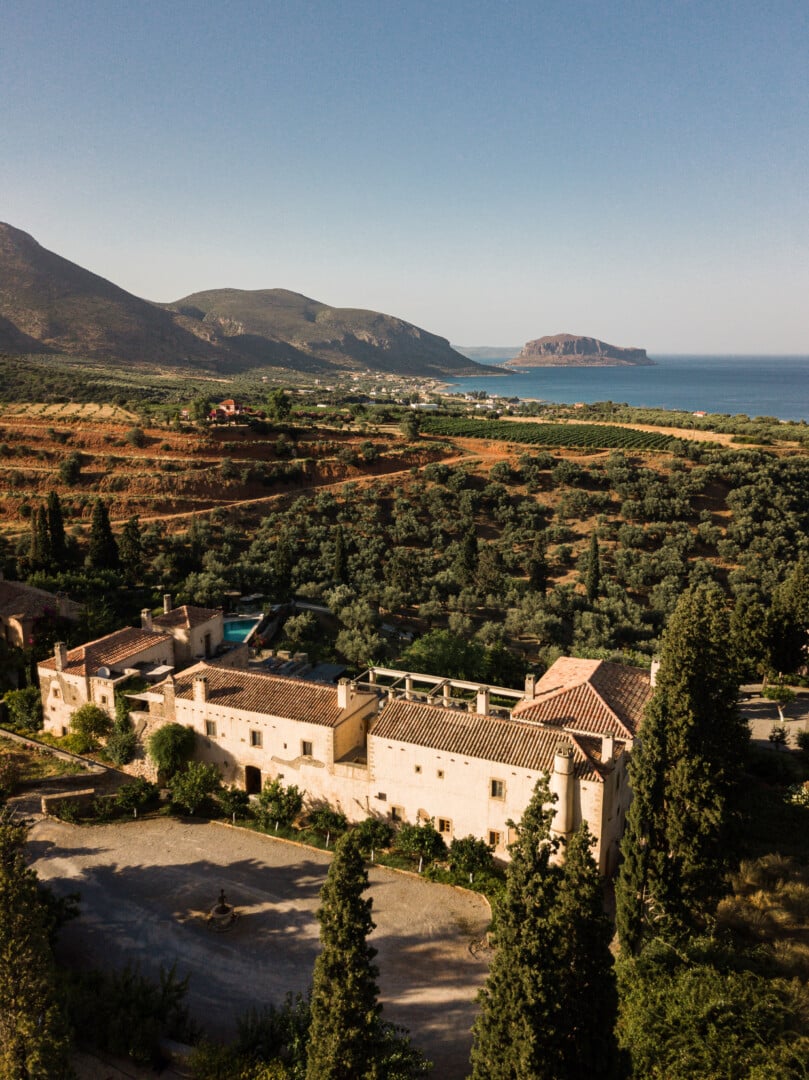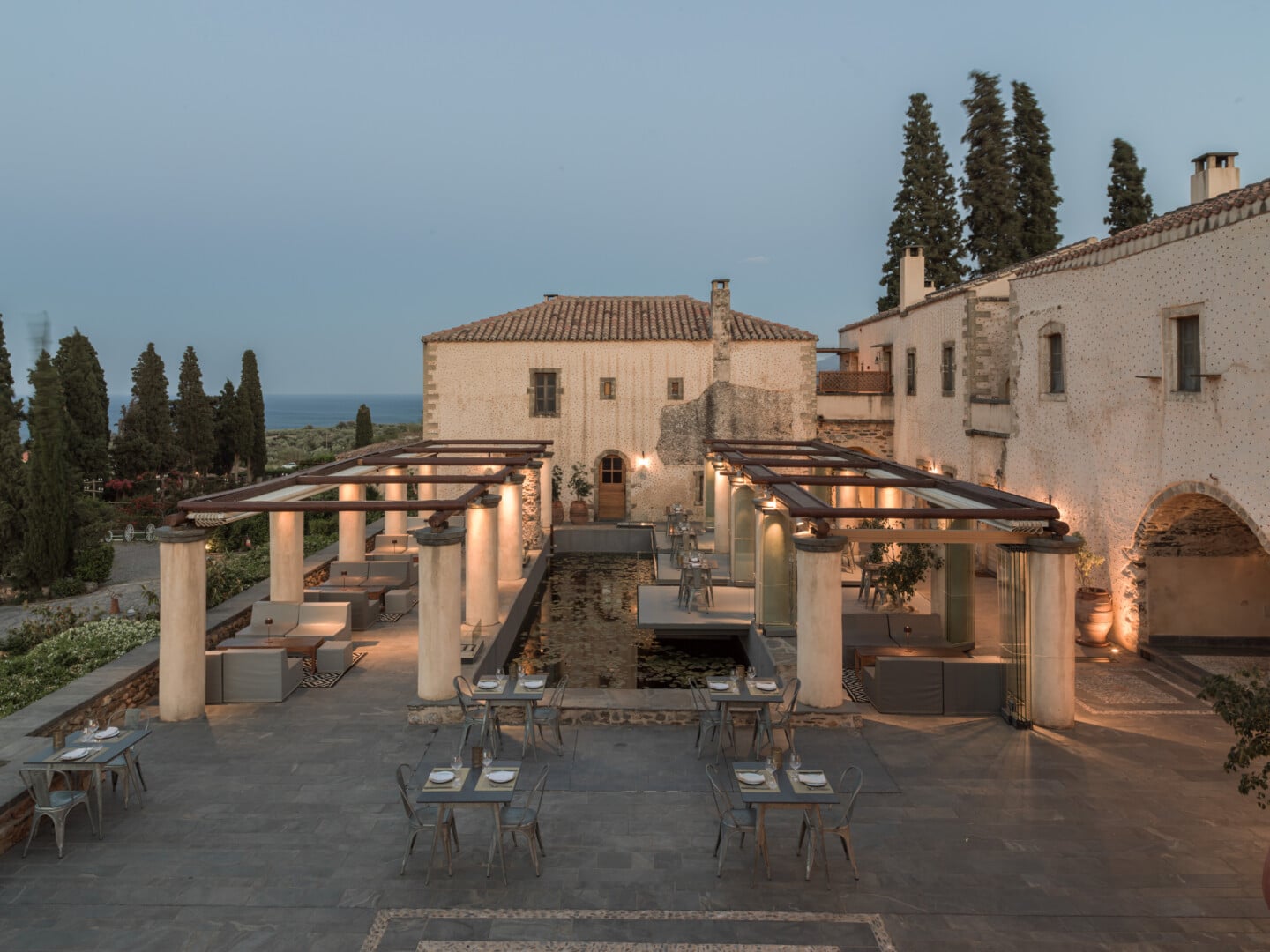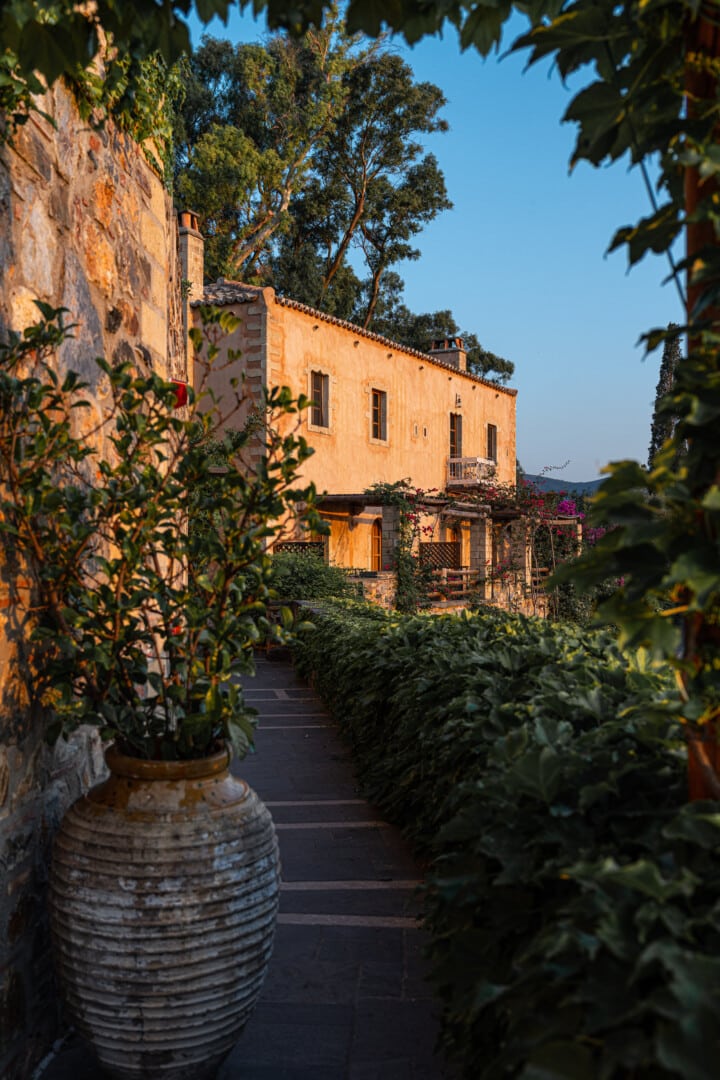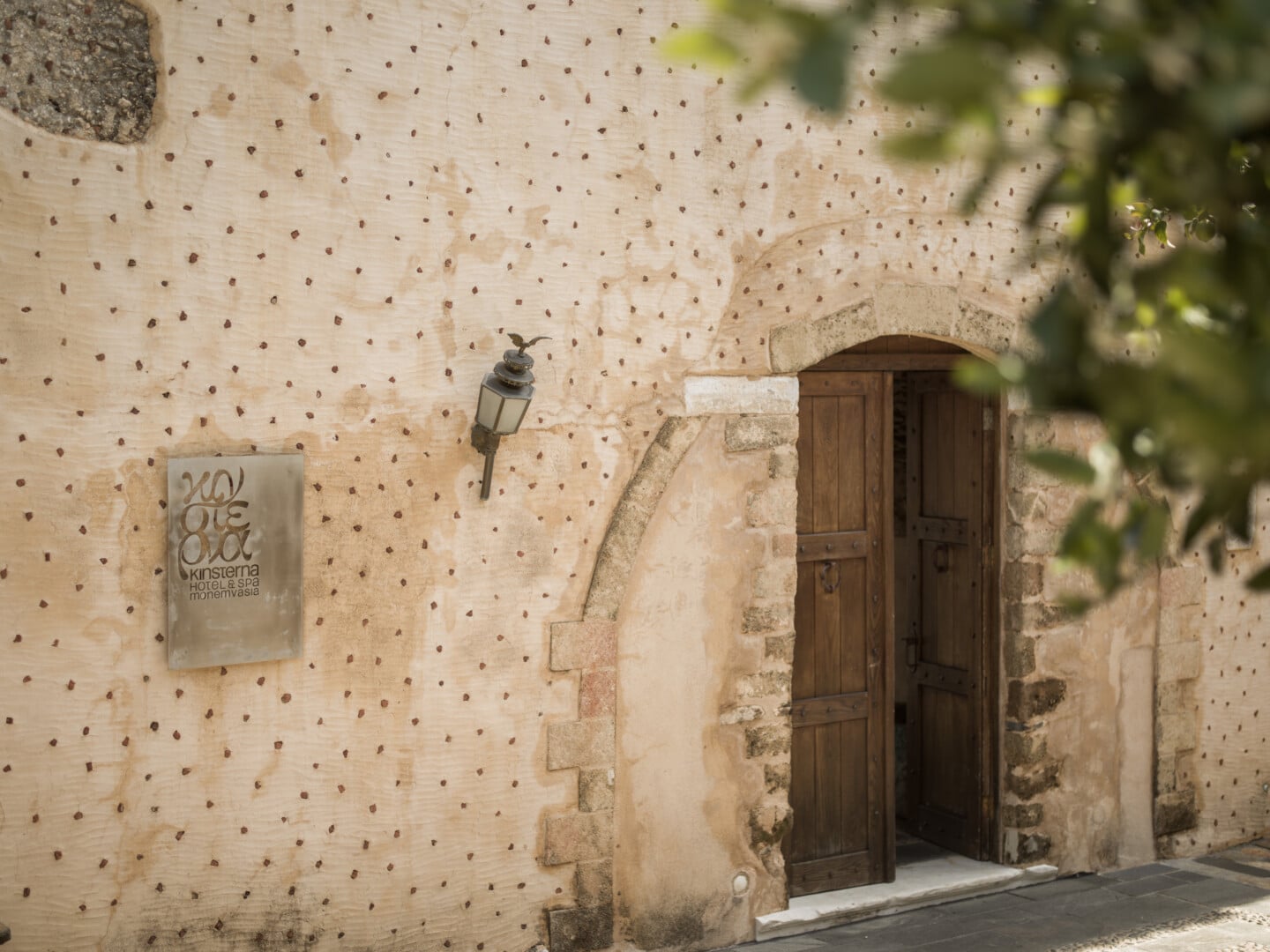
Hotel Location
Kinsterna Hotel is located in the village of Agios Stefanos, 7 km southwest of Monemvasia in the southern Peloponnese and is built on the edge of the “Ibrahim Bay” estate. The fertile grounds of the estate, now 25 acres in size, includes perennial olives, citrus trees and especially the old orange grove that produces the famous oranges of Monemvasia, fruit trees that have been there since the beginning of the 19th century (and those that had disappeared, replaced by local varieties), imposing cypress trees, oversized historic century-old eucalyptus trees, orchards with horticultural, ornamental and aromatic plants and herbs.
Monemvasia, known to the Franks as ‘Malvasia’, is a historic town in the eastern Peloponnese, in the province of Epidaurus Limiras, in the prefecture of Laconia. It is best known for its medieval fortress, on the homonymous ‘Rock of Monemvasia’, which is a small island connected by a bridge to the current beach of the settlement. The surviving buildings and structures of the castle include defensive structures of the outer wall and several small Byzantine churches.
